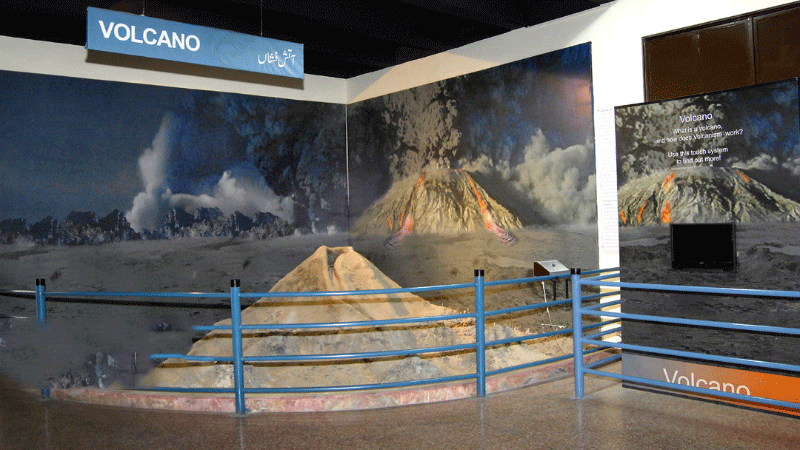The Earth Science Division of the PMNH will carry out the plan for the development of a Volcano Display in the vicinity of the Baluchitherium Model.

The Pakistan Museum for Natural History (PMNH) intends to build an “Outdoor Volcano Display” to educate the general public, particularly students, about the country’s natural history. The Earth Science Division of the PMNH will carry out the plan for the development of a Volcano Display in the vicinity of the Baluchitherium Model.
A volcano, mountain, or hill is formed by the accumulation of materials erupted through one or more openings in the earth’s surface (volcanic vents). The sides of most volcanoes are steep, but some can be gently sloping mountains or even flat tablelands, plateaus, or plains.
The Volcano Display is intended to educate visitors about the process of volcanism in the oceans and on continents. Volcanism typically occurs at plate boundaries as a result of tectonic plate movement.
In Pakistan, the Koh-e-Sultan and Koh-e-Dalil volcanoes of Cretaceous to Quaternary age (60 million to 2 million years old) are located at Pachin Koh, tehsil Nokkundi, Chagai district, Baluchistan. These areas hold great promise for economic mineral deposits, particularly iron, sulphur, molybdenum, travertine marble, and the world’s largest copper-gold deposits.
Dr. Saima Huma Tanveer, Director General of the PMNH, stated that the PMNH has planned the development of a Volcano Display in light of the importance of volcanoes in natural history and the PMNH’s mandate to educate students and the general public about Pakistan’s natural history.
The DG believes that the Volcano Display will educate students and the general public about the volcano eruption and help them understand it better. She stated that the Volcano Display will most likely be inaugurated in March by the Chairman of the Pakistan Science Foundation.
Because a large number of students from various schools, colleges, and universities visit this museum, which is the only one of its kind in the country, this newly built facility will be an additional source of attraction and learning for them.
The Pakistan Museum of Natural History (PMNH) was established in 1976 under the patronage of the Pakistan Science Foundation (PSF). It has four divisions: Botanical Sciences, Earth Sciences, Zoological Sciences and Public Services.
The first three divisions are engaged in the collection, preservation, identification, and research activities related to plants, animals, fossils, rocks, and mineral resources, while the fourth is responsible for public education through dioramas, exhibits, lectures, workshops, seminars, posters, and film shows.
PMNH scientists work on various projects for the popularization of natural history through research publications, displays, exhibits, and dioramas.